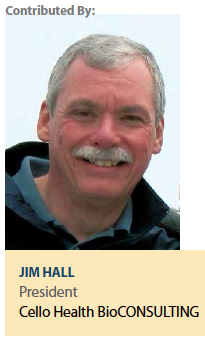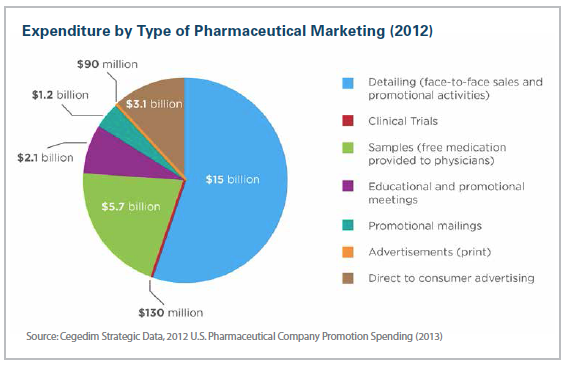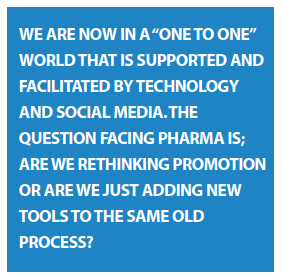A Journey From “One to Many" to “One to One"
 As Heraclitus said, “The only thing that is constant is change." Well the world of drug promotion has changed. It has ceased to be a simple matter of detailing to physicians and an occasional pharmacist; it has evolved into an activity that is more sophisticated, more technologically supported, and more targeted. In the past, a sales rep would talk to any physician, office manager, or nurse practitioner who would listen.
As Heraclitus said, “The only thing that is constant is change." Well the world of drug promotion has changed. It has ceased to be a simple matter of detailing to physicians and an occasional pharmacist; it has evolved into an activity that is more sophisticated, more technologically supported, and more targeted. In the past, a sales rep would talk to any physician, office manager, or nurse practitioner who would listen.
From a marketing perspective, it was a “one to many" concept that involved creating a message, blasting it out, following it up, and blasting it out again. A lot of this mass marketing of primary care products still goes on, but the days of Willy Loman are over. Given the shift to specialty, pseudo-specialty, and orphan drugs, the concept of one to many has run its course.
Interest in deciles has been largely replaced by targeting and profiling for connections and not just physician connections. Connecting to patients, care givers, and advocacy groups has become more important for some diseases. We are now in a “one to one" world that is supported and facilitated by technology and social media. The question facing pharma is; are we rethinking promotion or are we just adding new tools to the same old process?
Reengineering and Rethinking
In other words, do we use these new technologies to do the same old things but in a more efficient way or do we use them instead to change our approach to promotional activities that transforms them into something more effective? One of the best definitions of reengineering can be found in the seminal book on business transformation written 20 years ago by Michael Hammer and Jim Champy entitled Reengineering the Corporation. They describe reengineering as, “the opportunity to develop the rules by which business in the future will be conducted rather than being forced to operate by the rules imposed by someone else. As such, reengineering underpins every attempt to seize and maintain a true competitive advantage." Add a liberal dose of technology to the reengineering approach and the pharma marketer has the potential to create not just the ultimate competitive advantage but also the best customer experience. So is it evolution or revolution?
 The answer is both. For example, physicians are still bombarded by reps, although the number of reps has dropped dramatically in recent years, from 95,000 in 2008 to 65,500 in 2013, according to PharmaForce International Deployment Analyzer. Consumers still have to watch drug commercials on TV but increasingly now also on Internet banners and YouTube. In fact, the first pharma commercial on YouTube was launched by Pfizer six years ago. Innovative? Yes. Cool? Definitely. More effective? Maybe. Changing the conversation? Not really. In reality, it was just the evolution of technology used for a traditional promotion, a more efficient way of utilizing existing promotional approaches.
The answer is both. For example, physicians are still bombarded by reps, although the number of reps has dropped dramatically in recent years, from 95,000 in 2008 to 65,500 in 2013, according to PharmaForce International Deployment Analyzer. Consumers still have to watch drug commercials on TV but increasingly now also on Internet banners and YouTube. In fact, the first pharma commercial on YouTube was launched by Pfizer six years ago. Innovative? Yes. Cool? Definitely. More effective? Maybe. Changing the conversation? Not really. In reality, it was just the evolution of technology used for a traditional promotion, a more efficient way of utilizing existing promotional approaches.
There are however great examples of technology leveraged, groundbreaking, revolutionary ideas used by pharmaceutical and biotechnology companies. Starting with the basics of promotional activities and spend (see chart below), these innovative companies reengineered the promotional process. In other words, they rethought (i) who they were targeting, (ii) who was making the buying decision, (iii) who were the additional influencers, and (iv) what is the evolving perception of the disease and drug in question. They then used technology and new promotional strategies that effectively changed the conversation.
Changing the Conversation with Patients
One of the earliest adopters of technology and social media to change the conversation with patients was Genentech. Starting from the position of caring about the patient, Genentech created the Herceptin website. It was a markedly different site with information about breast cancer, what to expect for treatment, what to ask your doctor, and most importantly, frank information about side effects and results.
The site became the standard for breast cancer, so much so that most women when diagnosed would often go to the Herceptin site whether they were being treated with the drug or not. Herceptin and Genentech had created a standard of care for a website that was greater than the product by changing the conversation with the patient about breast cancer and care. In doing so, they reengineered the idea of promotion.
Changing the Conversation with Patients and Influencers
With the ubiquitous nature of the Internet, information good or bad is readily available for the informed consumer and the influencer. Doctors, especially those of the younger generation, increasingly tend to access valuable clinical and product information via the Internet and proprietary networks. They also make increased use of technology in their interactions with patients. My doctor, for example, is my generation, our meetings are face to face and we communicate by telephone. His follow-ups are timely and usually involve the office manager giving me a call. My son’s doctor is his generation. His follow-ups are text messaged and more timely and personal. If needed he is only a FaceTime session away. Increasingly, for drugs with truly unique clinical differentiation, physician awareness and education can be best leveraged via the Internet. Not only does this facilitate two-way communication, it also enables the ability to provide up-to-date, real-time information; patient service and diagnosis support; as well as patient and caregiver support.
 Take for example, the product Juxtapid used to treat Homozygous Familial Hypercholesterolemia (HoHF). A drug with a small patient population and a disease with a complex diagnosis need to leverage two important promotional activities, educating the doctor and finding the patients. While educating doctors on something as complex as the diagnosis and treatment of HoHF is important, for a rare disease and specialty drug, finding the patients to be treated is even more so.
Take for example, the product Juxtapid used to treat Homozygous Familial Hypercholesterolemia (HoHF). A drug with a small patient population and a disease with a complex diagnosis need to leverage two important promotional activities, educating the doctor and finding the patients. While educating doctors on something as complex as the diagnosis and treatment of HoHF is important, for a rare disease and specialty drug, finding the patients to be treated is even more so.
This can be accomplished by leveraging advocacy groups and then creating patient-to-patient networks for referrals. Or it can simply be finding others that share the disease and share the symptoms by connecting via LinkedIn or Facebook. Word of mouth supported by social media is a powerful promotion tool. Rethinking how to go to market as a specialty or orphan drug is critical given the patient populations as there is no possibility of mass marketing, blast marketing or even pull-at-your-heartstrings YouTube commercials for rare diseases. This is what Aegerion Pharmaceuticals did with Juxtapid; the company’s marketers changed the conversation with the patient and influencers, and in doing so, they reengineered the idea of promotion.
Changing the Conversation About the Disease
It is important to understand promotional mix not just in the context of the disease profile (primary or specialty or orphan) but also the type of drug being promoted and how this is clinically differentiated in its competitive environment. Understanding these dynamics will result in being able to determine the opportunities that can make most effective use of technology and social media as tools to develop innovative promotions to patients or caregivers or advocacy groups or all of the above.
Take multiple sclerosis (MS) for example. MS has four different disease manifestations: relapsing remitting (RRMS), secondary progressive (SPMS), primary progressive (PPMS), and progressive relapsing (PRMS).
Although MS is considered a specialty disease and therefore treated with specialty drugs, it is in fact marketed as a primary care (RRMS), specialty (SPMS and PRMS), and rare/life-threatening disease (PRMS). When first treated more than 25 years ago, it was simply promoted as a specialty disease; patient diagnosis was difficult as were finding physicians who understood the disease. Today, however, given the research and the development of new drugs, RRMS is treated almost as a primary care issue. This is due in a large part to Biogen’s approach and leadership in the treatment of the disease. Unlike other pharmaceutical companies in the MS space, Biogen chose the Genentech/Herceptin route to the market and developed a supported disease website, as well as patient support, online services, and connections.
While promotional spend on their drug Tysabri at launch was focused on specialist detailing and medical events, the promotional mix has evolved with increased direct-to-consumer spend and direct-to-patient information. Biogen changed the conversation about the disease as well as the conversation with patients. In doing so, they reengineered the idea of promotion.
Today’s Reengineering Will Need Reengineering Tomorrow
As powerful as today’s technology and social media ecosystems are, the opening words from Heraclitus remind us that these too will change. And with them, the challenges and opportunities facing pharmaeceutical marketers when it comes utilizing these resulting changes in their promotional strategies.
How they succeed will ultimately depend on whether they have the same conversations more efficiently, or whether they will reassess each conversation with a view to transforming the communication not just more efficiently, but critically, and more effectively. In doing so, they will continually reengineer the idea of promotion to create the ultimate competitive advantage as well as the best customer experience. They will truly change the conversation. (PV)
Cello Health BioCONSULTING is a strategic management consulting firm focusing on pharmaceuticals, biotechnology, and medical device companies in the United States. Cello Health BioCONSULTING, with offices in Boston, New York, Philadelphia, Chicago, and San Francisco, offers a unique set of services that focus on early product development, commercialization and business development support for small and mid-cap companies.
For more information, visit cellohealthbioconsulting.com


















